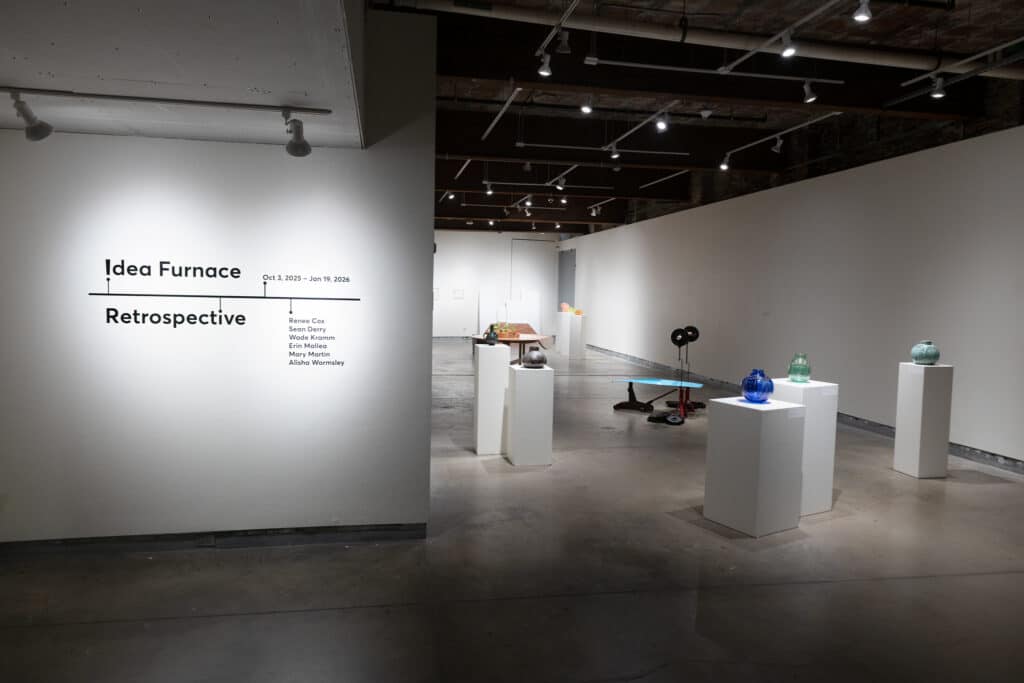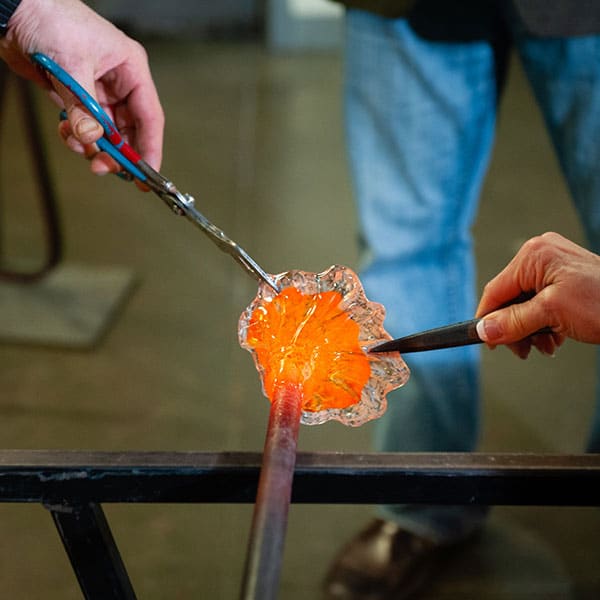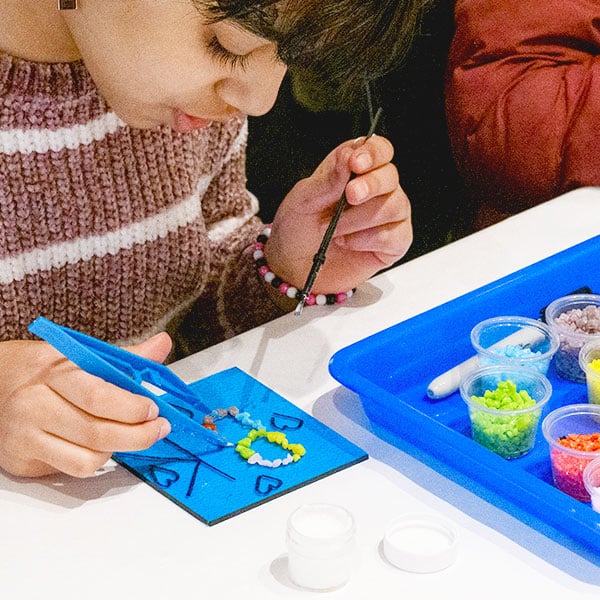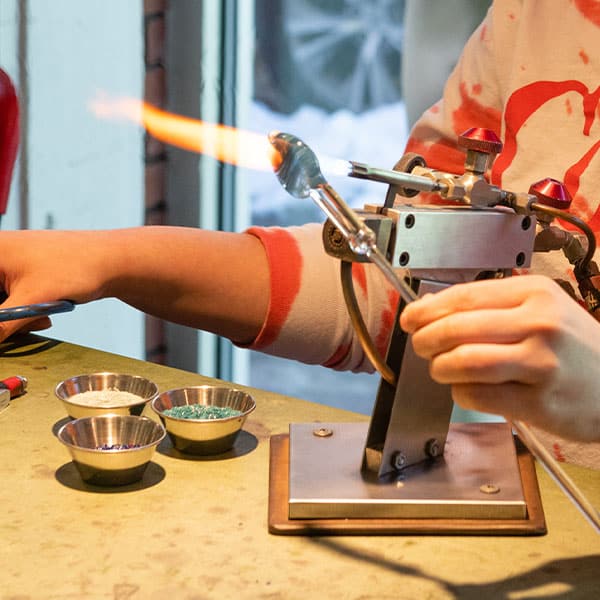Idea Furnace Retrospective
October 3, 2025 – January 19, 2026
Join us on Thursday, December 11 at 5:00pm for an Artist Talk + Happy Hour with Idea Furnace Artists Sean Derry, Wade Kramm, and Mary Martin. LEARN MORE
Many ideas have been fired up in the studios at Pittsburgh Glass Center since the Idea Furnace program started in 2012. Nearly 60 artists have participated in this experimental design program that connects non-glass artists with glass artists and encourages exploration in other art forms. The Idea Furnace Retrospective is the second iteration of this exhibition that showcases the work of 6 artists of other mediums who participated in the Idea Furnace program and were inspired by glass. Featured artists:
Renee Cox
Sean Derry
Wade Kramm
Erin Mallea
Mary Martin
Alisha B. Wormsley
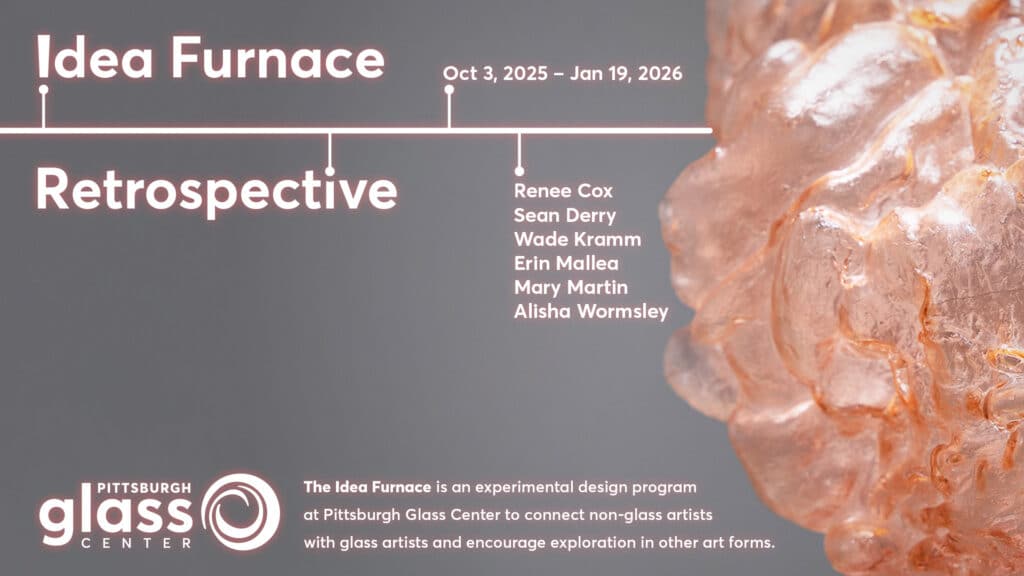
About the Artists
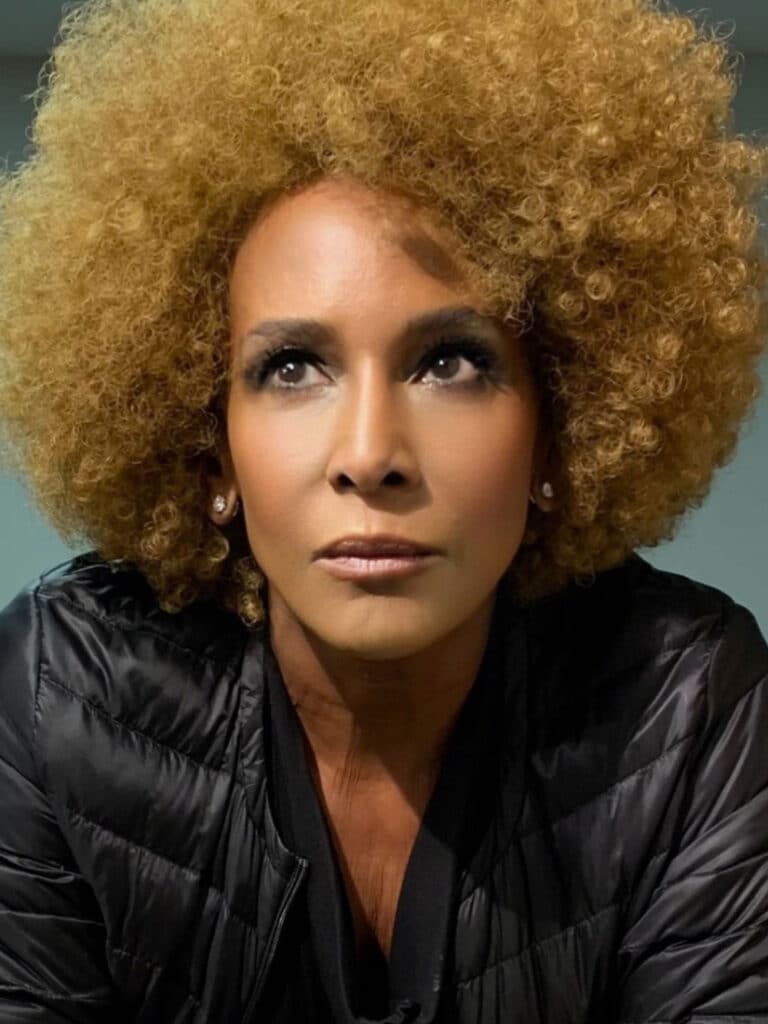
Renee Cox
One of the most influential living black photographers working today, Renee Cox’s works have inspired a generation. Her images are as fearless as they are iconic, trailblazing the path for women and those of colour to follow. Her formidable shadow looms large over the contemporary art world; studied in universities, and heavily featured in art history courses. Cox herself is at the forefront of the academic conversation, assuming the role of Adjunct Professor at NYU, a role she proudly held for two years. Cox has also taught at Columbia University and as a critic at Yale.
Best known for provocative images that have pushed the boundaries of art and popular culture, Renee Cox is a photographer, a sculptor, and an innovator. Cox is both heavily referenced and draws from a wide range of references ranging from traditional West African Art to Manet, Picasso, Avedon, Van Der Zee, and Bettye Saar. This rich collage of influences shapes her interdisciplinary process which utilizes heroism, nudity, religious imagery and female sexuality to deconstruct and re-imagine traditional notions of race, class and gender. Her larger than life self portraits boldly challenge patriarchy while celebrating the sacred feminine. For over 3 decades, Renee has captured herself and a colorful array of character in ways that honor tradition while expanding perspectives.
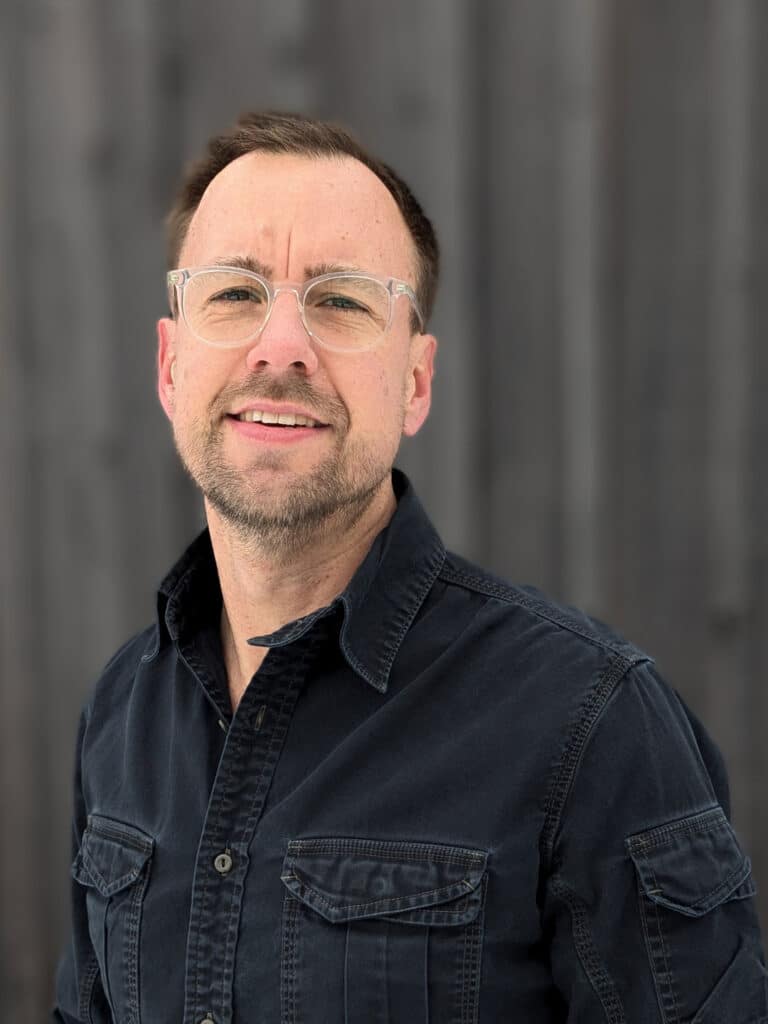
Sean Derry
Sean Derry’s work includes installations and participatory projects. Through his installations, Sean seeks to affirm the importance of resilience at a moment of increasing cultural conflict and ongoing environmental damage. He has exhibited his work in solo exhibitions at the Arlington Arts Center, Gallery 709, Das Klohäuschen, Goggleworks Center for the Arts, The Sculpture Center, and the International Gallery of Contemporary Art among other venues. Sean’s participatory public projects explore the lived experience of a place and investigate alternative strategies for inhabiting these environments. Sean is the co-founder of Alloy Pittsburgh, a recurring, site-based temporary exhibition at the Carrie Furnaces National Historic Landmark; and Local X Change, a non-profit organization that prioritizes collaboration and civic engagement as a tactic to build agency and strengthen communities.
For two summers artist Sean Derry lived on the southside of Kachemak Bay while carefully deconstructing a homesteading cabin dating from Alaska’s statehood. He has transformed the artifacts and building materials harvested from the cabin into a body of artwork that utilizes the erasure of the cabin as a process from which to explore decolonizing Alaska.
Erasure of the cabin is a parallel investigation of multiple ideas including colonization, domesticity, and remediation. Sean hopes to promote a form of migration that lacks the injuries of colonization. He says, “Key to this ideal is accepting the knowledge already present in a location and remaining mindful of how one’s presence alters the identity of a place. I hope that erasure of the cabin can exist as both an open investigation and an apology.” Through his work Sean challenges destructive notions of masculinity by embodying activities that prioritize empathy and repair.
In remote parts of Alaska, a building is typically removed by burning it. Fire would have quickly erased the structure, but Sean felt the process was wrong. He wanted the unmaking of the cabin to demonstrate conviction and therefore he began meticulously reversing the construction process. Two years after Sean pulled the first nail from the cabin all that remained of the structure was a plywood floor and rusty wood-fired cookstove.
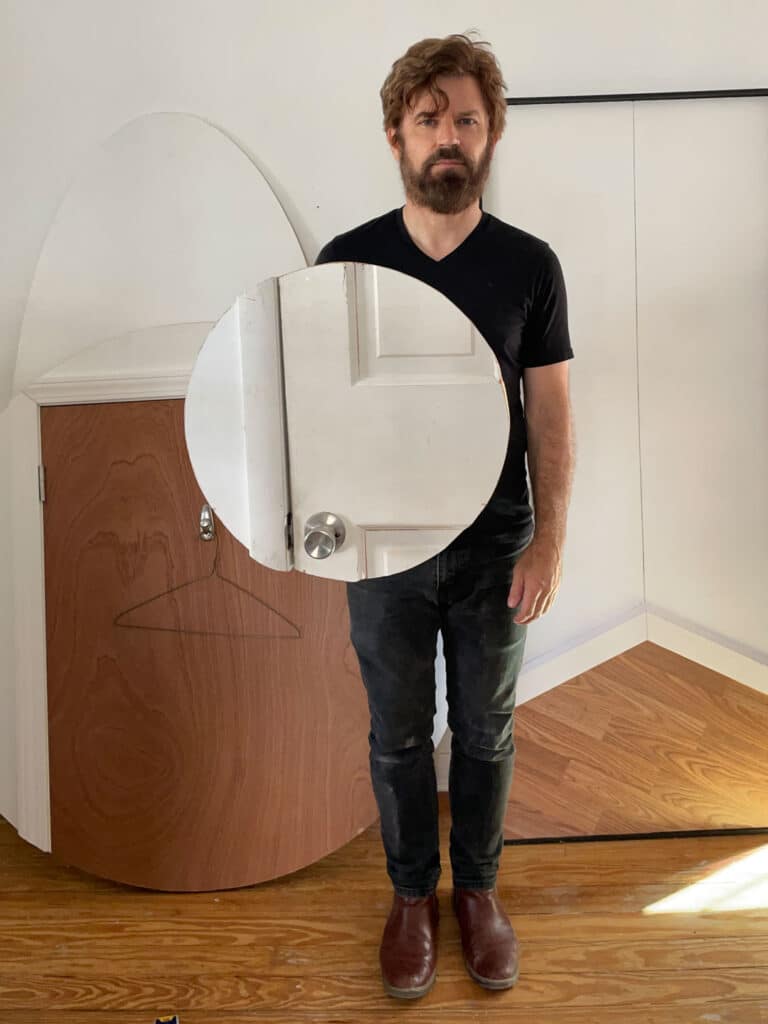
Wade Kramm
Wade Kramm is an installation artist based in New York and Pittsburgh. He has received multiple grants, including the Joan Mitchell Foundation Grant, The Rhode Island State Council for the Arts and an Artist Resource Trust Grant.
His work has been been exhibited at: Catskill Art Space, (Livingston Manor, NY) Cue Art Foundation (New York, NY), Odetta Gallery (Brooklyn, NY), Space 776 (Brooklyn, NY), Sammer Gallery (New York, NY), Concept Gallery (Pittsburgh, PA), Esther M. Klein Art Gallery (Philadelphia, PA); Athens Contemporary Museum of Art (Athens, GA) Piero Atchugarry Gallery (Pueblo Garzón, Uruguay), Tapir Gallery (Berlin, Germany), Chicago (Chicago, IL), and Art Project Fair (Verona, Italy). Kramm received his M.F.A. in sculpture at the Rhode Island School of Design, Providence, RI.
Invisible Gallery Wall transforms the ordinary elements of a gallery wall—artworks, electrical outlets, and a light switch—into cast glass. By rendering these familiar elements transparent, the installation shifts attention from the object to the environment, allowing the wall and surrounding architecture to become active participants in the work. This work extends my ongoing exploration of how subtle architectural interventions can recalibrate perception, drawing attention not only to the physical space but also to an awareness of the personal and cultural frameworks that shape our experience.
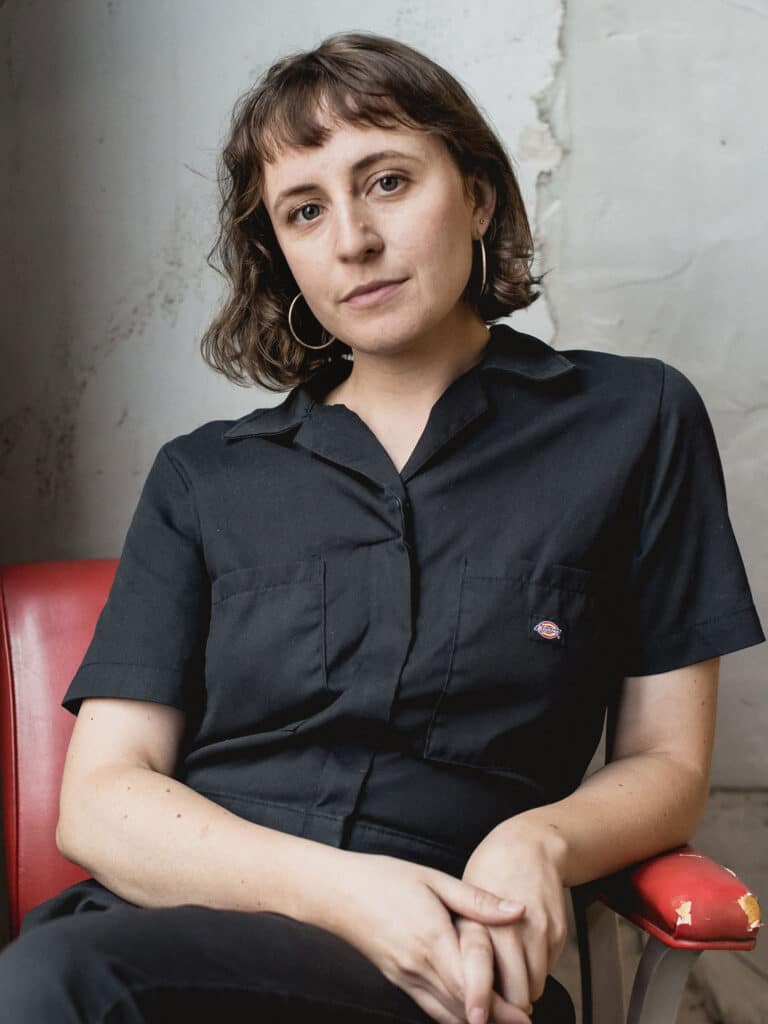
Erin Mallea
Erin Mallea is an artist working across sculpture, video, photography and print publications exploring place as an entry point into larger social, political, and environmental conditions. Across media, her process is often grounded in place-based research and partnerships outside of art spaces. She has worked with biologists, anthropologists, environmental justice activists and more to develop publications, collaborative projects, and layered, time-based installations. Her work collapses personal, natural, and national history to scrutinize cultural relationships to land, place, and time.
Erin Mallea is a multidisciplinary artist exploring place as an entry point into larger social, political, and environmental conditions. Across media, her process is often grounded in place-based research and partnerships outside of art spaces. She has worked with biologists, anthropologists, environmental justice activists and more to develop publications, collaborative projects, and layered, time-based installations. Erin’s work has explored land-use conflicts, near her hometown (Refuge, 2019), the industrial past and ecological transformation of a park beside my former studio (Tree News, Issue 2, 2022), her grandmother’s attempt to understand and articulate family history (Monument to an Origin Story, 2018), and environmental regulation, community pollution monitoring, and systems of power. (Obscuring Power, 2023).
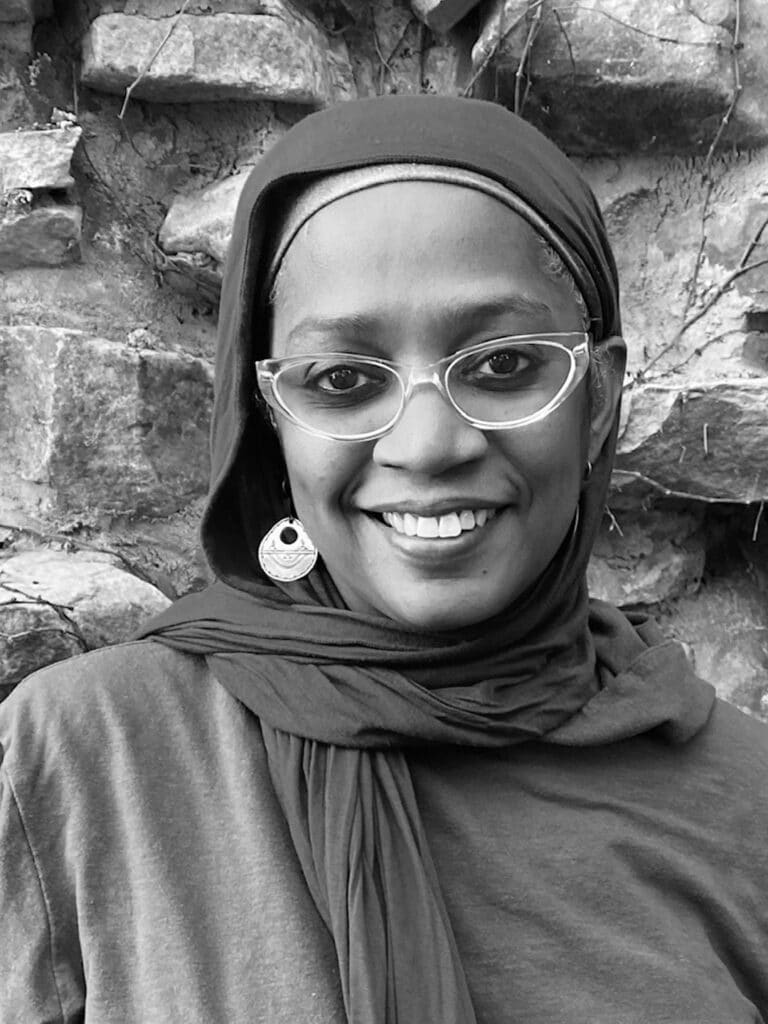
Mary Martin is a multidisciplinary African American visual artist based in Pittsburgh, Pennsylvania. Trained in both Architecture and Fine Arts at the Rhode Island School of Design, Martin’s studio practice includes ceramics, collage, printmaking, metals, and glass. Her work explores the interplay between structure and ornament, often merging functional and sculptural forms. She is known for her intricately carved surfaces and use of linear patterning that echo cultural memory, spirituality, and the geometry of ancestral design.
Martin’s vessels and mixed media works embody a language of form and surface that bridges architectural sensibility with the handmade, offering tactile narratives rooted in identity and cultural lineage. Her aesthetic is informed by both West African visual traditions and her lived experience as a Black woman navigating urban and spiritual landscapes.
In all aspects of her practice, Martin creates with an ethos of reverence—for craft, for history, and for the communities her work serves to uplift and reflect.
Reciprocity is an essential principle in Mary Martin’s artistic practice. 3D objects are storytelling vessels that both share fragments of memories and internalize the often silenced voices that are too often ignored in society. Her work reflects a double-consciousness that encompasses both my West African lineage and her existence in an unsettling urban environment. Often using West African-inspired patterns and motifs, she focuses many of her art pieces on the journey that affirms her identity and its interconnectedness with community, heritage, spirituality, and familial ties. Many of her ceramics are meant to be functional as well as beautiful. The functionality of her art acts as a bridge to connect people and draws a connection to ceremonial gatherings. Martin draws on African cultural traditions as a means to explore her heritage and the black experience.
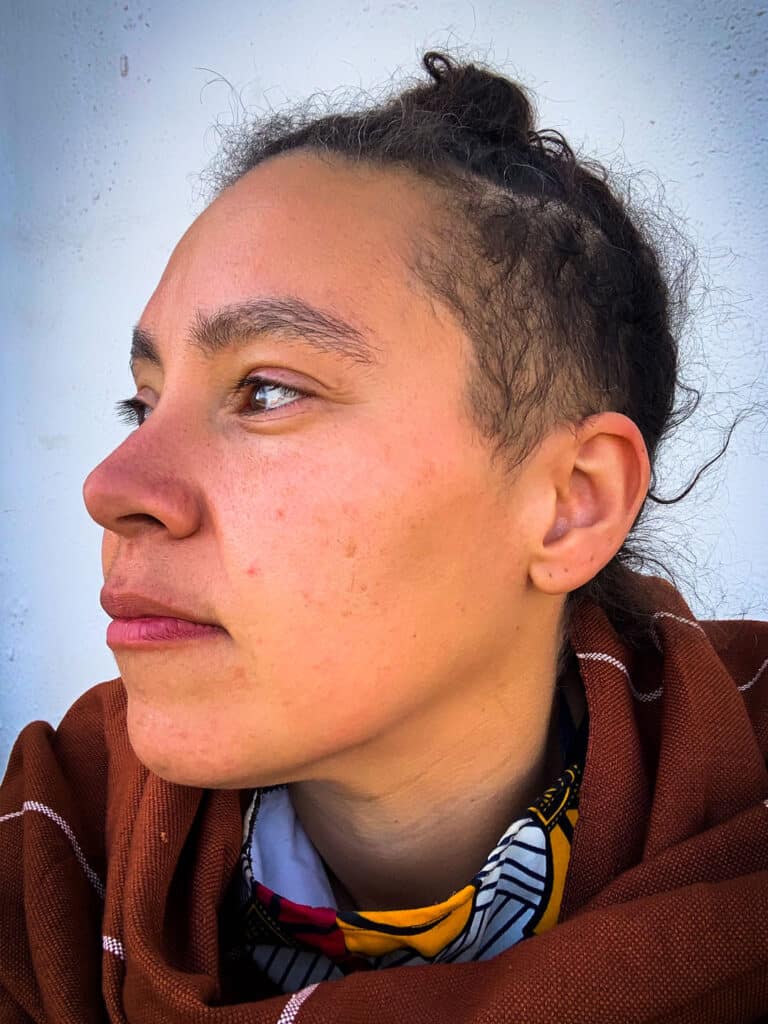
Alisha B. Wormsley
Alisha B. Wormsley is an interdisciplinary artist and cultural producer. Wormsley’s work is dedicated to the expansion and creation of time and space and the rematriation of Black/Indigenous Matriarch. Alisha is a mother, and founder of Sibyls Shrine, an arts collective and residency program for Black artists who M/other. Sibyls Shrine and her project, There Are Black People In The Future, both focus on the redistribution of resources and reimagination and rematriation of Black and Indigenous futures.
I am a visual artist and cultural producer working across film/video, craft, performance, public art, text, and sound. Over the past two decades, I have cultivated a mutable, interdisciplinary practice rooted in the reMatriation of the Black and Indigenous matriarch. My central commitment is to transforming the world into one where people—especially Black femmes—can not only survive, but thrive.
My work is anchored in The Children of NAN, an evolving theoretical and material archive that unifies my exploration of Black matriarchal experiences. It includes photographs, video, film, objects, philosophies, rituals, and performances—many of which I have created or collected. In many ways, this archive is me. Through it, I channel the spiritual potency of the object and its relationship to the sacred and scientific, the ancestral and speculative. It asserts that Black matriarchal sovereignty is fundamental to collective liberation.
My recent installation, Remnants of an Advanced Technology, draws from this archive. It features photo-based quilts, woven tapestries, and clay vessels paired with video, projection, and sound. These works act as maps, circuits, and wombs—offering a creation story that blends ancient practices like craft and plant medicine with futuristic media. In this work, technology is not defined by access or capital, but by care, healing, and sacred presence. I see Black femmes as embodiments of advanced technology, living at the convergence of past and future.
This theme also runs through my ongoing media-based project, There Are Black People in the Future, which includes billboards, found objects, flags, design, critical discourse, and protest. This project fosters global conversations around Black futurism and a decolonized imagination. One of its iterations, Cosmologyscape, developed with Suzanne Kite, brings together Black and Indigenous futurists in workshops that generate AI-assisted speculative public sculptures rooted in Afro-Futurism and Indigenous Protocol.
I am also the founder of Sybil’s Shrine, a residency for Black artists who m/other (not limited by gender). Co-created with Jessica Gaynelle Moss, this program critiques the extractive nature of creative capital while redistributing resources to a population often excluded from traditional arts funding. Supporting nearly 200 members nationwide, Sybil’s Shrine offers rest, financial support, career development, self-care, and community—all rooted in Black feminist theory and praxis.
In recent years, my weaving practice has grown alongside my video work. I am currently developing a series of visual manifesto films projected onto handwoven tapestries. These are part of Children of NAN: A Survival Guide, The Temple of Our Survival—a mobile film set and altar for Black femme futures. This tented structure is a world unto itself: quilted with African American textile language, lined with rugs, herbs, altars, and archives all made and assembled by me. It houses rest, meditation, play, and ritual.
Over the next two years, The Temple of Our Survival will continue to travel the country, gathering stories and strategies from Black matriarchs, hood witches, healers, and liberators. My work is not just about survival—it’s about building, remembering, and imagining a liberated future grounded in care, ancestral wisdom, and Black matriarchal power.
About the Idea Furnace
The Idea Furnace is an experimental design program to connect non-glass artists with glass artists and encourage exploration in other art forms.
Jason Forck, Director of Creative Projects, created the program to bridge the gap between glass and other art and design media. “We want to educate artists about glass, give them access to the material and help them advance their ideas,” he said.
Launched in 2012, Idea Furnace grew out of a 2011 residency at PGC with Gwylene Gallimard and Jean Marie Mauclet. They had extensive architectural ideas for their exhibition “Ten More Years on Penn,” but had no glass experience. They worked with artists at PGC and challenged them to create structures that had never been created before. The result was a 7-foot glass bridge.
Learn how to apply for the Idea Furnace
See images from the first Idea Furnace Retrospective exhibition in 2019
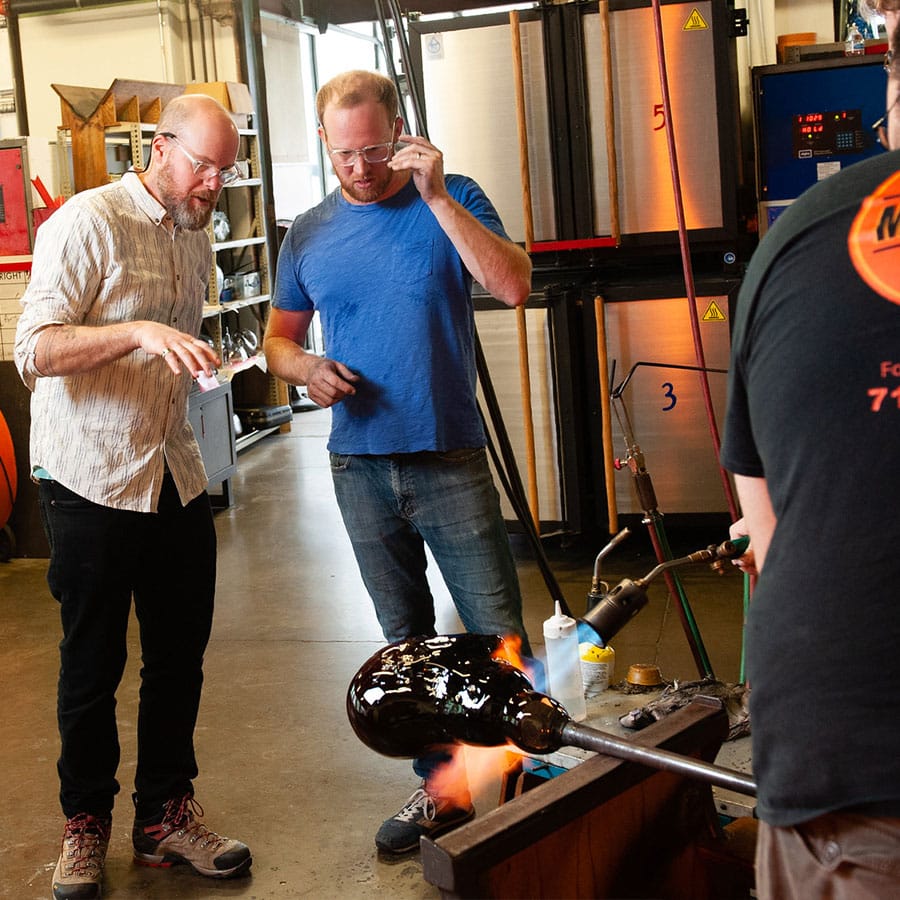
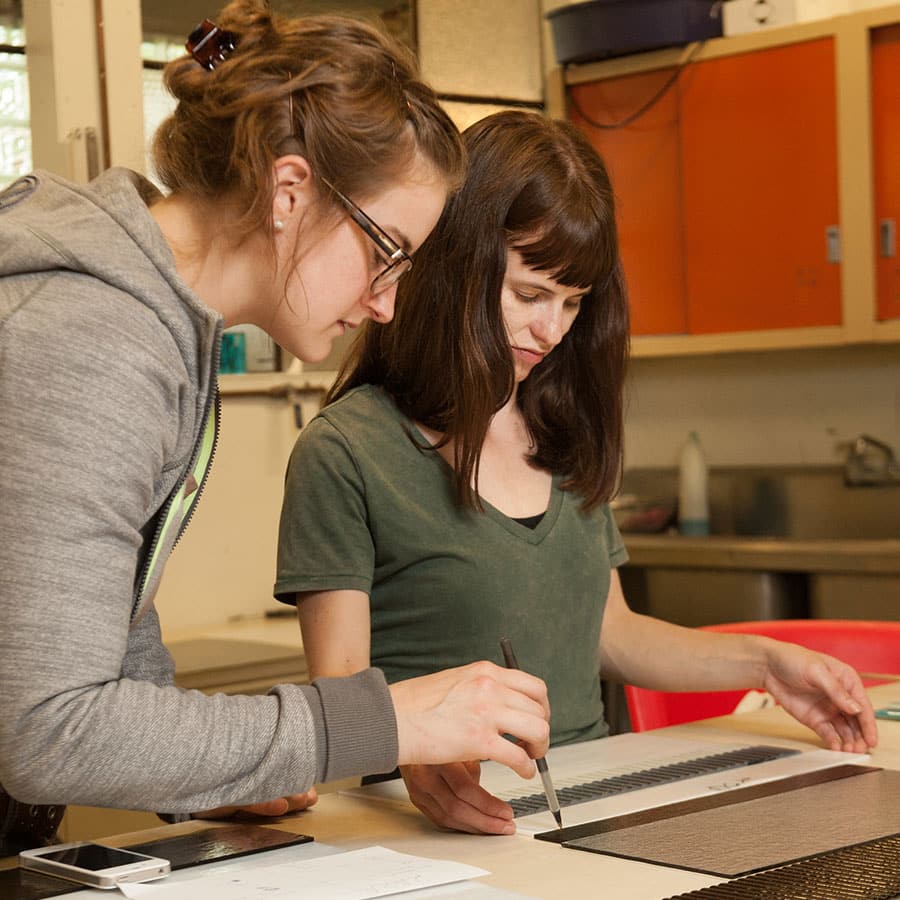
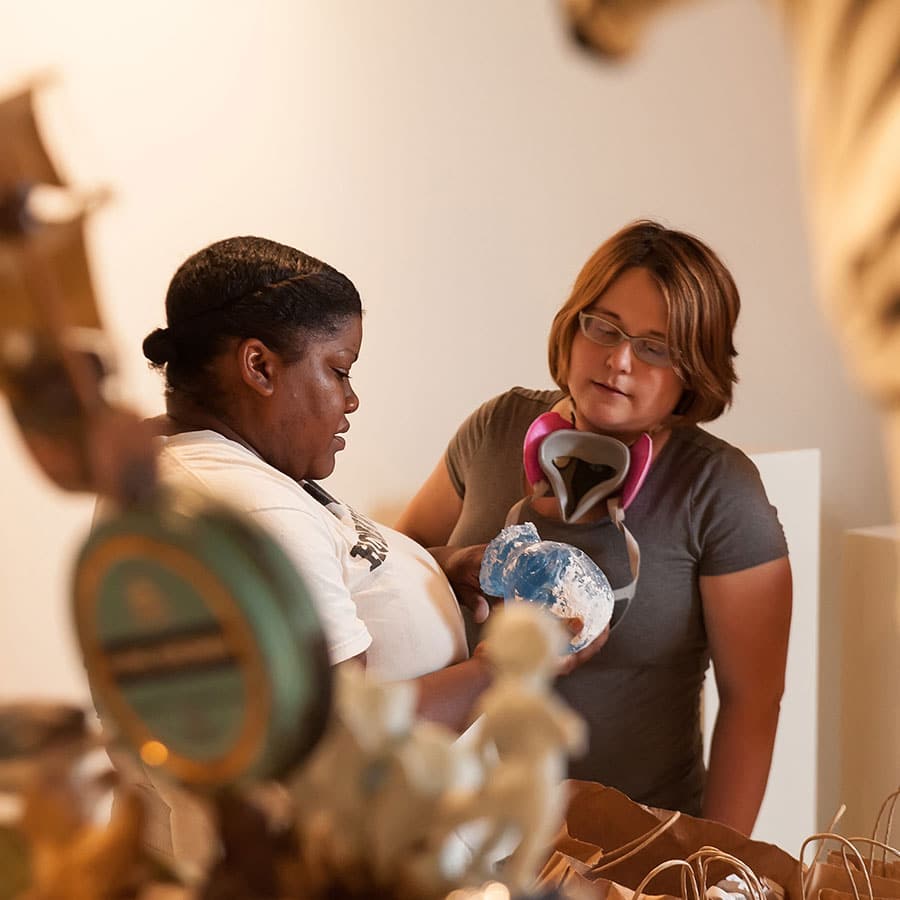
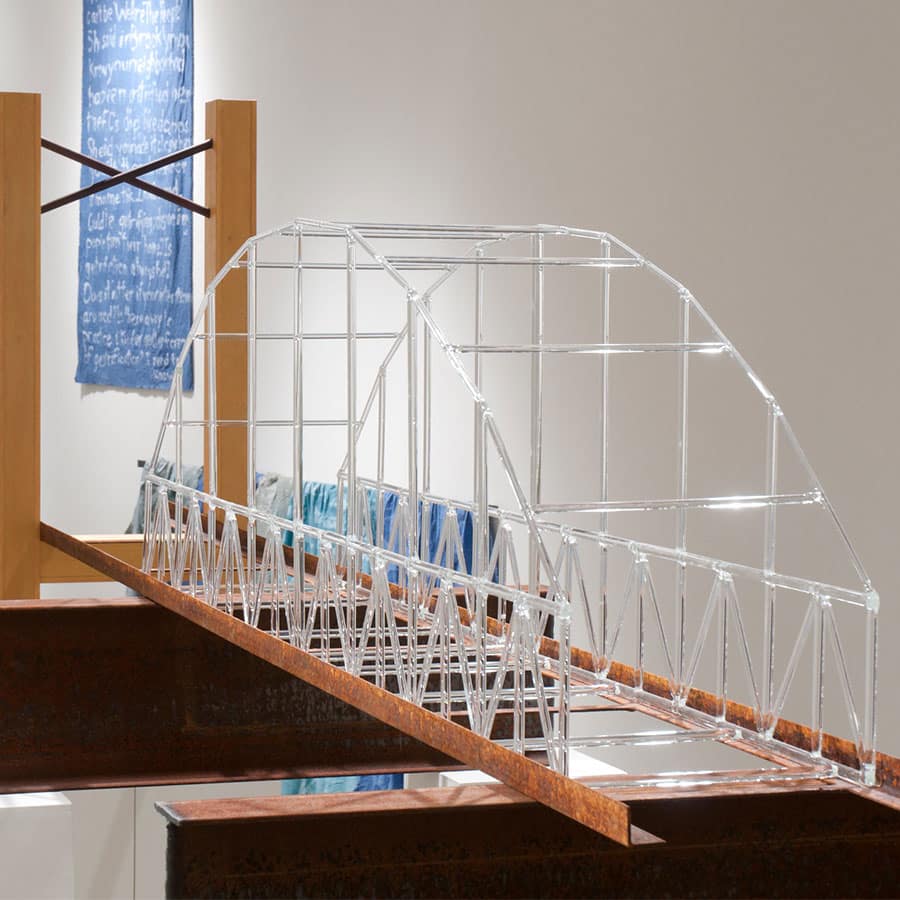
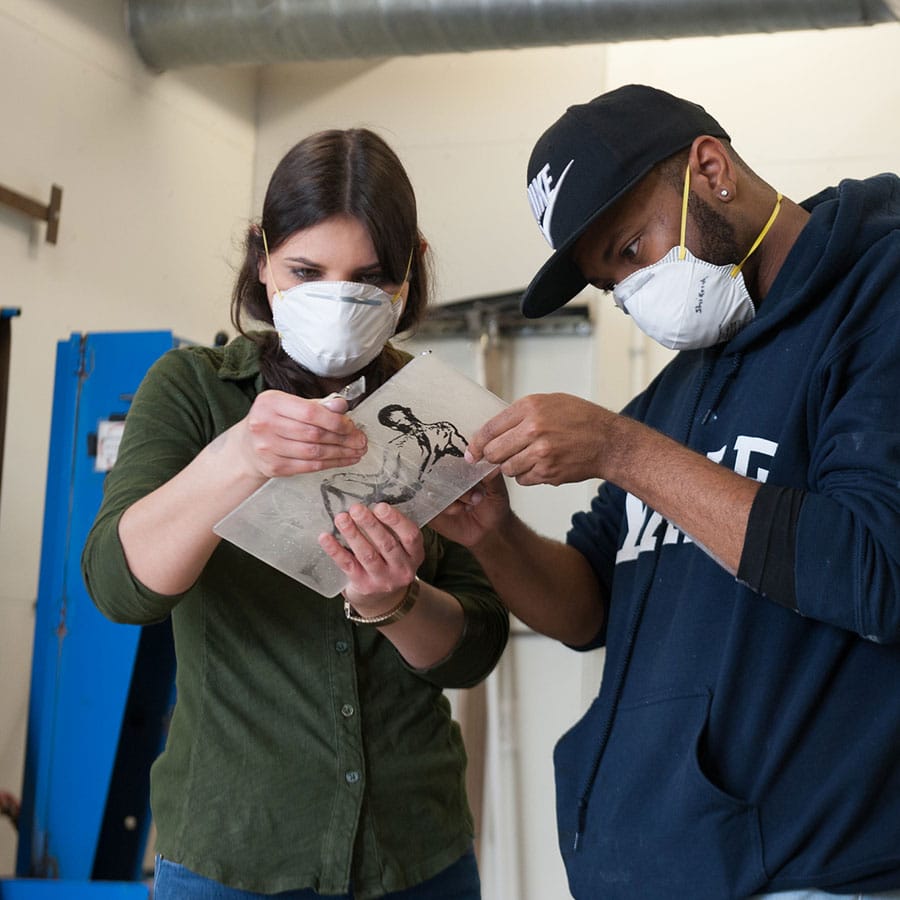
Sibyls Shrine
Artists Renee Cox, Mary Martin, and Alisha B. Wormsley participated in the Idea Furnace through a special partnership with Sibyls Shrine.
Sibyls Shrine is a network of Black artists who m/other in Pittsburgh, Pennsylvania— and beyond. We are an art collective and residency program rooted in our own radical care, rest and support.
Sibyls Shrine is a homage to the Sibyls, the original priestesses of the African goddess Mami Wata. The term was used to name the divine status, quality, and nature of the matriarchal guardians. Our program is motivated by a similar goal: uplifting Black artists who m/other with opportunities to further develop their craft and presence in the art world.
We provide artists in our network with opportunities to rest, unrestricted financial support, career development, skill-sharing, access to arts and cultural institutions, free classes and workshops, exhibition and speaking opportunities, support for self care, childcare and other daily needs— Sibyls Shrine has created a resource framework that directly addresses this intersectionality and many of the systemic and structural factors that continue to oppress Black artists who m/other.
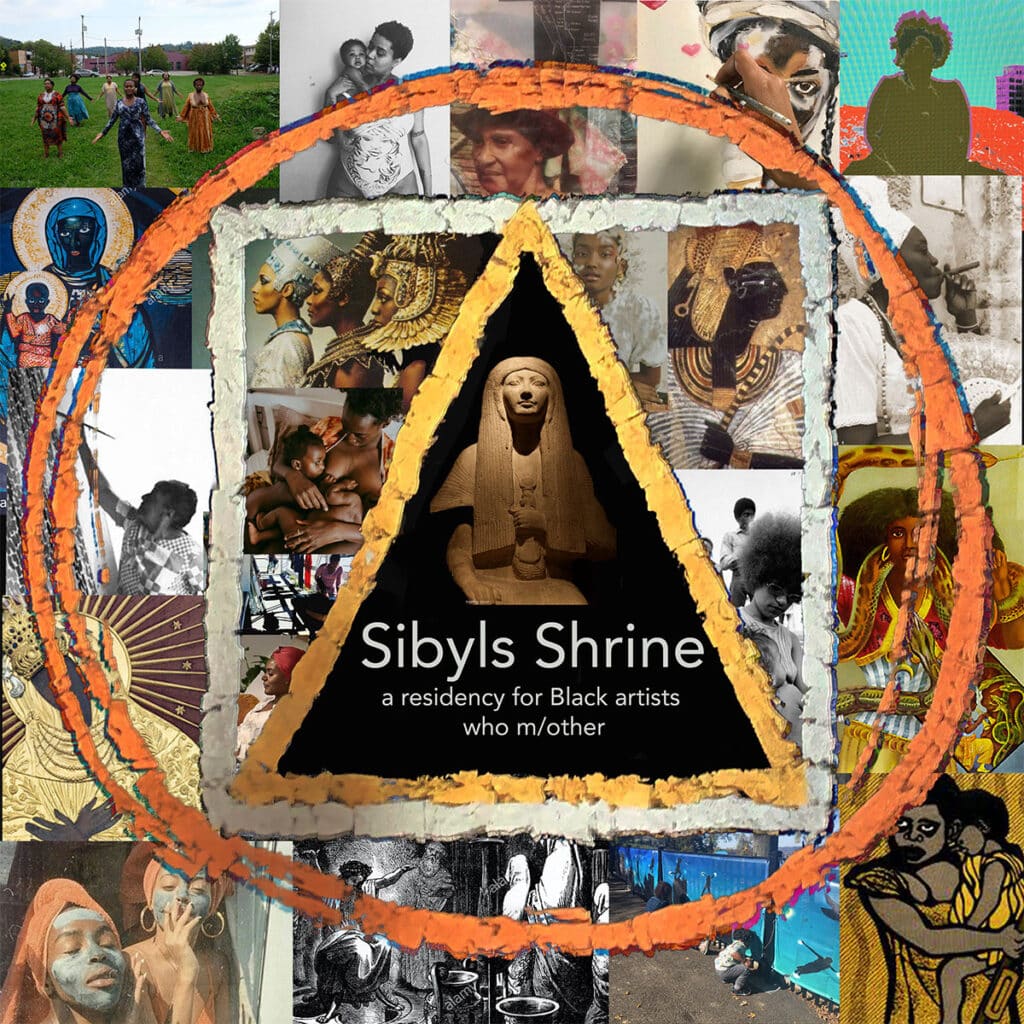
We now support 150+ members across 19 states and 26 cities. We have partnerships with 16 local, regional and national organizations to provide extensive resources and support to Network members. Since 2020, we have curated 11 exhibitions, 32 residencies, and 80 public programs all led by members of the Sibyls Shrine Network.
Sibyls Shrine was created in 2019 by Alisha B Wormsley, developed with Jessica Gaynelle Moss, in partnership with Shiftworks Community + Public Arts. Learn more at www.sibylsshrine.com.

